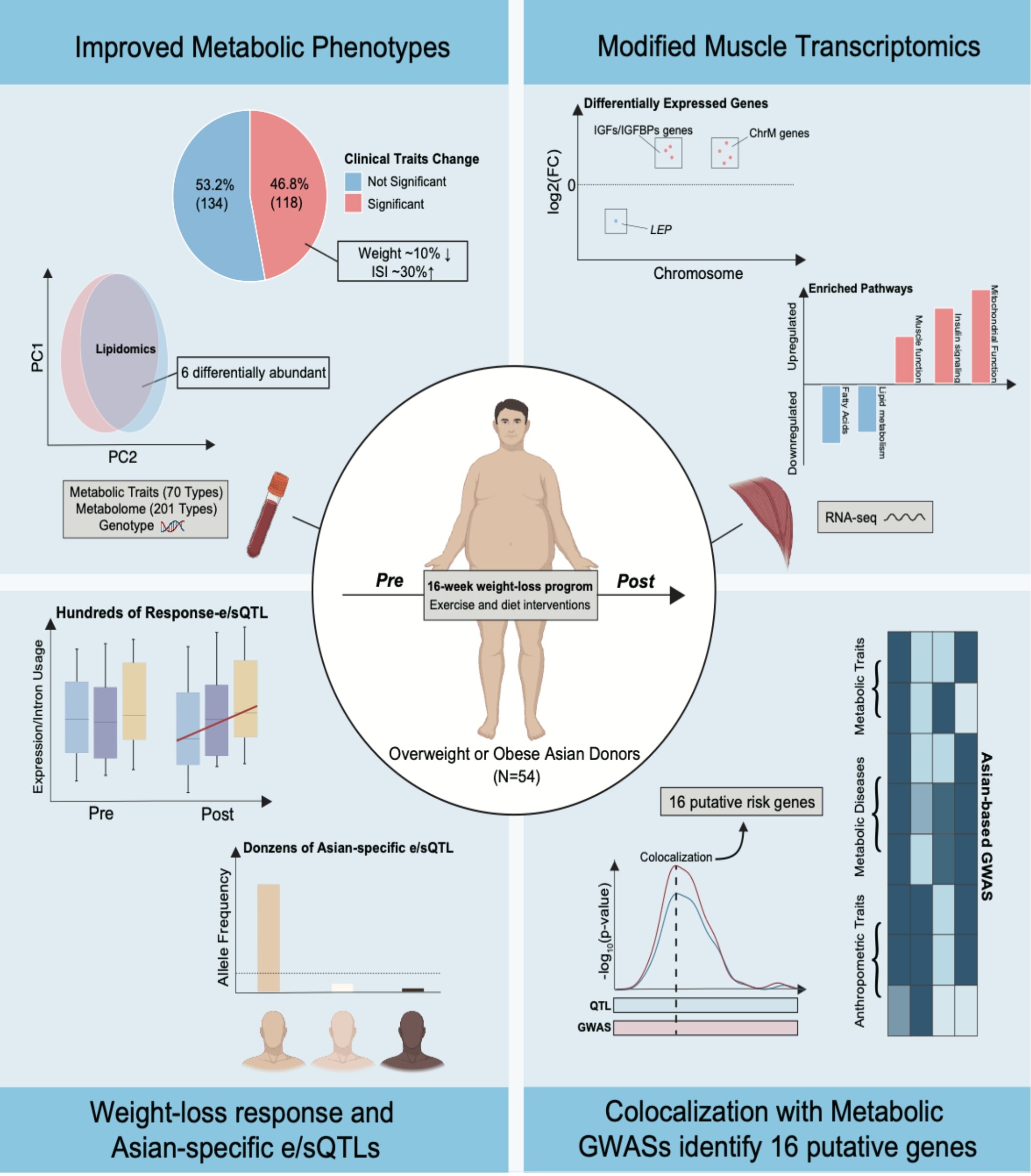
Lifestyle interventions reshape gene regulation in skeletal muscle of Asians
How did your country report this? Share your view in the comments.
Diverging Reports Breakdown
Lifestyle interventions reshape gene regulation in skeletal muscle of Asians
Overweight or obese East Asian individuals underwent a 16-week lifestyle intervention involving diet and exercise. Study revealed improvements in metabolic health, changes in skeletal muscle gene expression, and genetic regulation patterns influenced by lifestyle. Hundreds of response-specific gene regulatory variants (e/sQTLs) were identified, including many unique to Asian population. Integration with metabolic GWAS data highlighted 16 candidate genes associated with disease risk. Most genomic data today still come from European populations, leaving Asian groups significantly underrepresented. This limits our understanding of gene–lifestyle interactions in Asians and hinders the development of precise, tailored prevention strategies, say the researchers. The findings have been published in the Journal Cell Genomics. The research team plans to expand the study to include female participants and other Asian subgroups. They also aim to apply advanced technologies such as single-cell and spatial transcriptomics sequencing to explore the response of different cell types within muscle tissues to changes with greater potential for personalized treatments.
Graphical summary of the study. Overweight or obese East Asian individuals underwent a 16-week lifestyle intervention involving diet and exercise. The study revealed improvements in metabolic health, changes in skeletal muscle gene expression, and genetic regulation patterns influenced by lifestyle. Hundreds of response-specific gene regulatory variants (e/sQTLs) were identified, including many unique to Asian population. Integration with metabolic GWAS data highlighted 16 candidate genes associated with disease risk. Credit: Cell Genomics
Researchers from the National University of Singapore (NUS) have revealed that diet and exercise can change gene regulation in the skeletal muscle of East Asians, highlighting the critical role of gene-lifestyle (G x L) interactions in metabolic health. The findings have been published in the Journal Cell Genomics.
Although earlier studies in animals and cross-sectional human research have shown that lifestyle can affect gene expression, very few human studies have tracked these changes over time.
Even fewer have done so in Asian populations, who are more prone to metabolic diseases at lower BMI thresholds. Most genomic data today still come from European populations, leaving Asian groups significantly underrepresented. This limits our understanding of gene–lifestyle interactions in Asians and hinders the development of precise, tailored prevention strategies.
Data collection for this study was conducted by a multidisciplinary team of researchers, including clinical psychologists, metabolic disease specialists, and bioinformaticians from the National University of Singapore and the Agency for Science, Technology and Research.
The study conceptualization and analysis were jointly led by Assistant Professor Boxiang LIU, from the Department of Pharmacy and Pharmaceutical Sciences, and Dr. Mei Hui LIU from the Department of Food Science and Technology, both at NUS.
The research team spent almost three years establishing a rigorously designed lifestyle intervention cohort—known as the Singapore Adult Metabolism Study—Phase 2 (SAMS2). The team initially recruited 265 overweight or obese East Asian adults to participate in a 16-week intervention program involving supervised exercise and dietary changes.
After careful screening and sample collection, 54 individuals contributed paired skeletal muscle biopsies before and after the intervention.
Using these longitudinal samples, the researchers performed transcriptome sequencing, genetic profiling, and detailed clinical measurements. This allowed them to systematically analyze changes in gene expression and splicing patterns in skeletal muscle in response to lifestyle intervention.
The study produced the first integrated longitudinal dataset of genetic regulation and gene expression in an Asian population undergoing lifestyle intervention. This resulting dataset provides a valuable molecular resource for understanding the influence of lifestyle factors on metabolic disease risk, and lays the foundation for future precision health strategies tailored to Asian populations.
Results showed that participants lost, on average, about 10% of their body weight and improved their insulin-stimulated glucose uptake by about 30%. Transcriptome analysis revealed 505 genes that changed after the intervention, particularly those involved in pathways related to mitochondria and insulin signaling.
Further genetic analysis (Quantitative Trait Locus (QTL) mapping) uncovered hundreds of gene regulatory variants that showed evidence of G × L interaction.
Of these, 4.2% of expression variants (eQTLs) and 7.3% of splicing variants (sQTLs) were specific to people of East Asian ancestry. When compared with 12 existing Asian-based genetic studies (GWAS datasets), 16 colocalized genes were found to be linked to metabolic traits, including known risk genes like ANK1 and CRTC3.
Intriguingly, the effect of several of these genetic risk factors became weaker after the intervention, suggesting that lifestyle changes may help attenuate the impact of genetic risk.
Building on this work, the research team plans to expand the study to include female participants and other Asian subgroups to better understand sex and ancestry-related variations in gene–lifestyle interactions. They also aim to apply advanced technologies such as single-cell and spatial transcriptomics sequencing to explore the response of different cell types within muscle tissues to lifestyle changes with greater resolution.
Assistant Professor Liu said, “Our long-term goal is to identify potential genetic targets that can inform personalized treatments for obesity and diabetes. By understanding the interaction between lifestyle and gene regulation, we hope to guide the development of more effective therapies tailored to an individual’s unique genetic background.”
More information: Wenjing Wang et al, Impact of polymorphisms on gene expression and splicing in response to exercise and diet-induced weight loss in human skeletal muscle tissues, Cell Genomics (2025). DOI: 10.1016/j.xgen.2025.100951 Journal information: Cell Genomics
Source: https://medicalxpress.com/news/2025-08-lifestyle-interventions-reshape-gene-skeletal.html
